‘Tis but a scratch
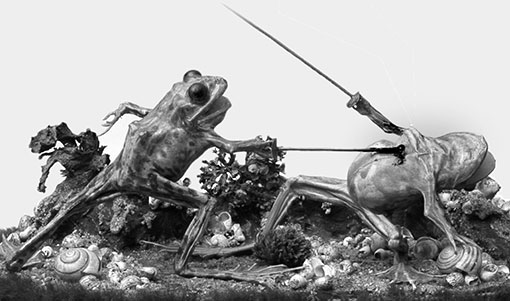
This charming example of Victorian taxidermy – and my charming, I mean disgusting – was in the collection of Louis Mantin, a wealthy eccentric from Moulins. He built an entire mansion around his art collection. Not all of it in execrable taste.
When he died in 1905, he willed the property to the town – on the condition they put it on display and change nothing inside. He wanted people a hundred years hence to see “a specimen of a bourgeois home of the nineteenth century.”
It’s not clear to me that he meant to board it up and completely neglect it for a century, but I haven’t seen the will with my own eyes. Anyway, that’s what they did. Boarded it up and let it gently rot.
After pouring a bunch of money into it again, it opened to the public in 2010. NatGeo has a short slideshow, but you’ll probably see more on an images search.
What it is to have money, with or without taste. Good weekend, all!
Oops! I didn’t hit publish on this last night! Happy Caturday, folks.
January 30, 2021 — 1:10 pm
Comments: 5
Here’s that pitcher of dicks you ordered, ma’am
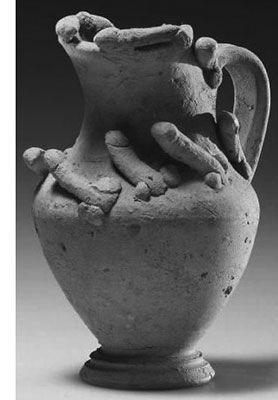
Standing erect in the stream of Twitter archaeology news every week, we find the #PhallusThursday hashtag.
I feel like there’s a joke here that I’m not getting. Like the word for penis and the word for the fourth day of the week rhyme in ancient Assyrian or something and the PhD archaeologists are laughing at me for not knowing that.
But it’s probably just a cheap opportunity to post dick pics on Twitter.
Try it if you need a break from following #stonks, #GameStop and #robinhood. Phew!
Hey. HEY! I can quit Twitter any time I want.
I’ve had the theme from Phyllis stuck in my head all day. I was a fan. Particularly of that theme song. RIP Cloris Leachman.
January 28, 2021 — 8:53 pm
Comments: 12
And speaking of calico…
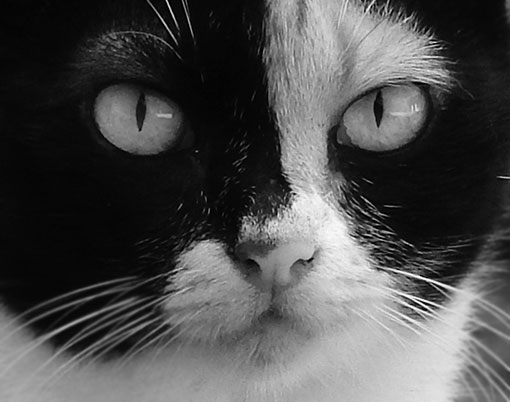
Been meaning to look up why calico cats are always female. Here’s the skinny: calicos are usually white, orange and black (or tabby or gray or…whatevs). About 70% white on average – that has nothing to do with the topic at hand, but I thought it was interesting.
The X chromosome carries the gene for either ginger or black (or a variety of non-white colors). One color per X chromosome. So only XX (that is, female) beasts can have both ginger and black.
Except those poor little bastards with Klinefelter syndrome. They have XXY, XXXY or even XXXXY chromosomes. I don’t think it creates much of a problem in cats, but it can produce the occasional a male calico.
The gene for white isn’t on a sex chromosome, but elsewhere in the genome, so any old cat can carry it.
“But wait, Stoaty, you magnificent beast!” I hear you say, “most gingers are male. How that be?”
Male gingers carry the ginger gene on their one X chromosome. Female gingers have to have the ginger gene on both X chromosomes. That makes the ratio is about 3 to 1 male to female, and I believe ginger girls must have ginger daddies.
I think ginger and black without the white is how you get a tortie, but I’ve about come to the end of my genetic education.
If you ever yearn to feel stupid and slow, try looking into the genetics of chicken colors. Here’s a look at the basics.
January 27, 2021 — 7:38 pm
Comments: 10
I had it exactly backwards
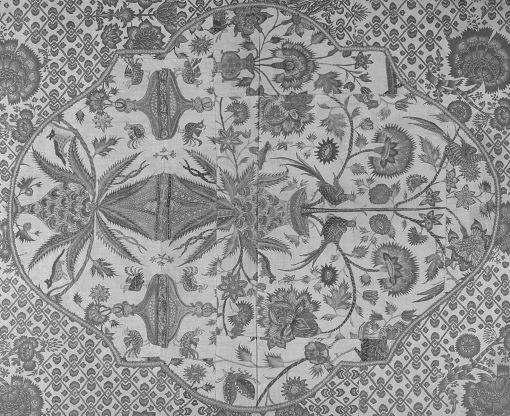
The word ‘chintzy’ drifted across my consciousness this afternoon. By the diktat of my new lockdown rules, that means I had to look up ‘chintz’.
I knew it was a fabric. I was astonished to learn it isn’t so much. It’s more about the style of decoration. It originated in 16th Century India – the word is derived from the Hindi chīnt, meaning spotted or freckled. It’s about the busy, often floral block prints.
But chintz was often printed on calico, another word I completely misunderstood. Calico is a rough fabric made from unbleached cotton, and by ‘unbleached’ I mean not fully processed so there’s still bits of shit in it. Also from India, 16th C, named after the city of Calicut (not to be confused with Calcutta).
So gaudy print + cheap fabric = chintzy. I thought calico was the decoration and chintz was the fabric. I was bassackwards.
And while we’re here, muslin (a much more refined woven cotton than calico) was named for Mosul, as in Iraq. Where it isn’t actually from.
And that’s the end of today’s edition of “Things You Could Damn Well Have Looked Up on Wikipedia Yourownself If You Cared.”
January 26, 2021 — 6:02 pm
Comments: 16
Happy Burns Night!

Haggis! Neeps and tatties! Those are the things in this picture!
We’re having chicken fingers and instant mashed potato.
I like instant mashed potato. Don’t judge me.
I might have a whisky, though. Especially as I have to go finish filing my taxes now.
January 25, 2021 — 8:13 pm
Comments: 9
Ain’t nobody got time for that…

One side effect of being on Twitter so much is learning how many people have, or are planning to have, podcasts. Or YouTube rant channels or whatever.
Some of them I maybe, sorta have an interest in topically – but holy geez, they’re so long! Hours, some of them.
And they all start off with their intro (okay, branding, I get it) and then they natter on for a while about their schedule for the next week and what they’re playing on Twitch afterwards. I mean, you’re five, ten minutes in and they still haven’t said anything on-topic. I DON’T HAVE THE ATTENTION SPAN.
Surely, there isn’t a market for so much content from the same angle. And who has time for this? Who has two hours to be captive? You can skim a headline aggregator in seconds. Done.
p.s. yes, I’m trying to wean myself off Twitter. I need a project.
p.p.s. have a good weekend, everyone!
January 22, 2021 — 7:49 pm
Comments: 16
Then there’s this thing
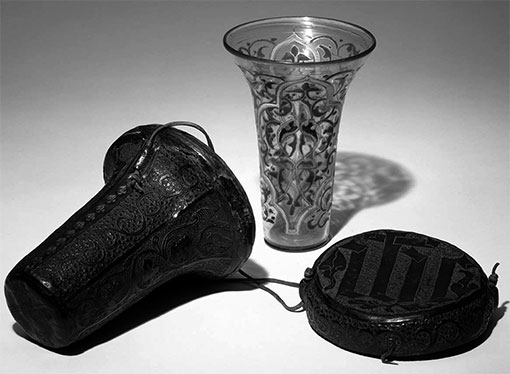
A thing I found looking for ancient Persian metalwork: behold the Luck of Edenhall. Do follow the link and see it in color.
It was made in Syria or Egypt around 1350, and the leather case in France or England not long afterwards. The leather case is undoubtedly how it manage to survive all this time in tact. How it got from there to here is unclear; Eden Hall was in Cumberland, a county to the far North. It’s first mentioned by name in 1677 in the will of Sir Philip Musgrave.
It is a wonderful example of luxury Islamic glass, but by the time it found its way to England, it was blamed on the fairies. Naturally.
The (probably 18th C.) story goes that a yokel interrupted a fairy drinking party. The fairies ran off, leaving the cup behind. A pissed off and drunken fairy shouted over his shoulder: “If this cup should break or fall/ Farewell the Luck of Edenhall!”
A luck is a class of objects from the North of England that have a legendary significance to the fortunes of a family. Lost, broken, stolen or sold would ruin the luck of a family. It stayed in the Musgrave family until they loaned it to the V&A in 1926; Eden Hall was demolished in 1934.
You decide!
January 21, 2021 — 8:22 pm
Comments: 10
Lion optional
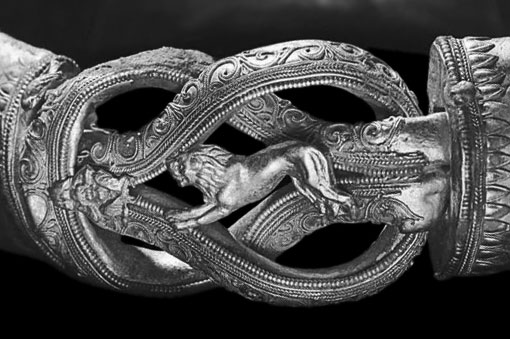
We are having a jolly conversation about metalworking in the thread below. BJM says he used to work silver wire and Thracian “Herakles knot” arm bands were a popular item.
I have a new rule under lockdown. Any word or phrase I don’t understand, I immediately stop and look it up. There’s really no excuse not to now, when you can highlight, right click and search all in one swell foop.
Heracles knot is another word for reef knot (AKA square knot, Hercules knot, double knot or brotherhood knot). In jewelry, it is a symbol of love or friendship.
I don’t know how it’s associated with Heracles. I didn’t spend much time looking, though – it’s bath night!
A warning from the International Guild of Knot Tyers (yes, there is):
The International Guild of Knot Tyers warns that this knot should never be used to bend two ropes together. A proper bend knot, for instance a sheet bend or double fisherman’s knot, should be used instead. Knotting authority Clifford Ashley claimed that misused reef knots have caused more deaths and injuries than all other knots combined.
I woke up in a good mood today. No, it didn’t make any sense to me, either, but I held onto it as best I could by avoiding social media. Mostly.
January 20, 2021 — 9:22 pm
Comments: 9
Stare at this beautiful thing!
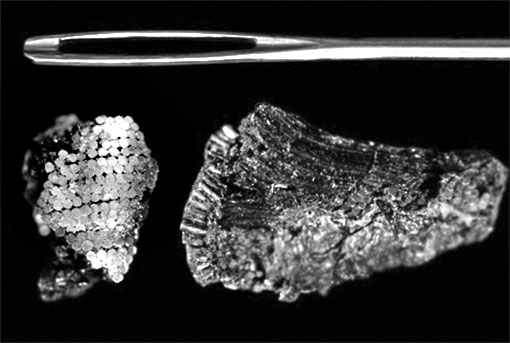
This is part of the pommel of a sword dug up in 1808 from Bush Barrow, a Bronze Age burial mound half mile from Stonehenge. It’s about 4,000 years old.
Let me ‘splain what you’re looking at. The craftsman extruded a wire a bit thicker than a human hair, snipped off a millimeter of it and flattened the end to make a stud. Like a tiny golden nail. You can see them side-on in the image bottom right.
Then he poked a hole for the nail in a wooden pommel and stuck it in the hole with a resin adhesive. This would have required some sort of awl and some sort of tweezers – these things are way too small for human fingers.
There would have been maybe 140,000 of these tiny gold nails in the final piece, which would have taken an estimated 2,300 man-hours. Yes, I am defiantly using the expression ‘man-hours’.
The article doesn’t say so, but it would have sparkled magically.
The article also quotes an “expert on the optics of the human eye” who said only children or people who ruined their eyesight as children could have done this work, which would impair them for life.
I thought we’d been told that was a myth; that you don’t ruin your eyesight making lace. My optometrist told me it wasn’t so much that my eyesight was deteriorating, as that it was more and more fixed at the distance I used most (i.e. computer screen distance).
Anyway, take it from myopic me; it wouldn’t have impacted life all that much. I go around without my glasses most of the time and life is a pleasant soft and gauzy haze. Minimal bruises.
I tried to find a better site for this story than Ancient Origins, which seems like an ‘aliens invented underpants’ sort of place, but I failed. I also spent quite a while trying to find a YouTube to explain how the ancients made fine gold wire. All the demonstrations of wire-making I could find involve blowtorches and a tool-and-die works. No success so far.
January 19, 2021 — 8:30 pm
Comments: 14
Everything is stupid. Let’s laugh at these women.
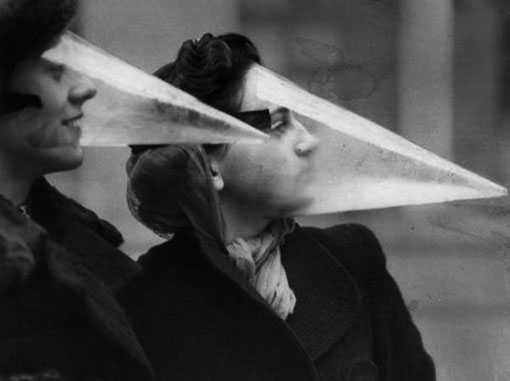
The photo is described as “Women wear plastic headgear intended to protect the wearer from snowstorms in Montreal, 1939.” I mean, I guess.
That’s all I’ve got the heart for. I’ve spent most of the evening in bed under an electric blanket.
Quaint Tudor farmhouses were not built for comfort; there’s a reason they invited the cows into the house.
January 18, 2021 — 9:23 pm
Comments: 7











